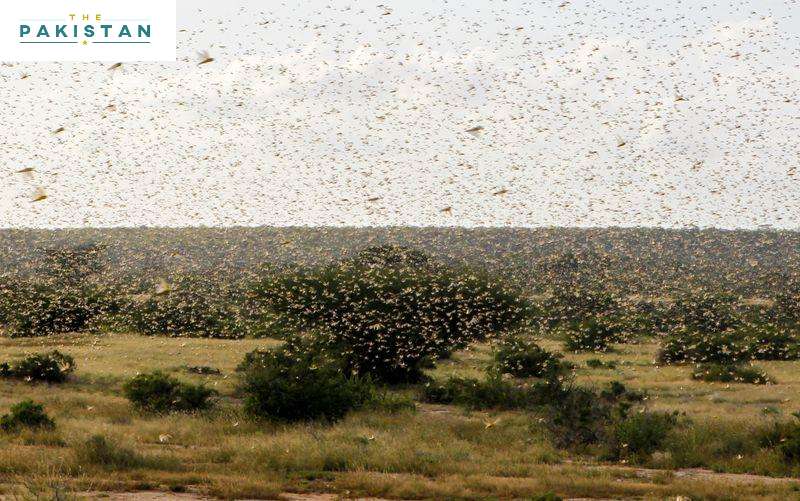
Auto Draft
The National Locusts Control Centre (NLCC) on Friday claimed that as of August 6, no Locust was present in the province of Punjab, Balochistan & Khyber Pakhtunkhwa.
Active breeding is taking place in Tharparkar and some areas of Cholistan. The population developing in Nagarparkar is likely to fledge by mid-August. Anti-Locust Survey and Control Operations are in progress with presence of locusts found only in two districts/areas, including Tharparkar and Karachi.
It said the presence of locust swarms was reported in Taluka Nagarparkar, District Tharparkar. Reportedly, a swarm of Locust of at least two square km entered the general area Choorio and Bharano in the morning from Indian side. The Department of Plant Protection traced the swarms, however, it went back to Indian Rajasthan due to wind. However, operation was executed on remaining locusts. In addition, hopper bands have been found in the area on which operation was also executed and the same will be resumed in the morning.
Read Also: Heavy rains predicted in Sindh, Punjab today
In Balochistan, 4,703.25 square km has been treated with the help of 232 teams, 112 vehicles and 1,288 manpower. In Punjab, 4,589.60 square km has been treated with the help of 539 teams, 388 vehicles and 2,830 manpower.
In Khyber Pakhtunkhwa 625.35 square km has been treated with the help of 80 teams, 106 vehicles, and 847 menpower. In Sindh 1,016.2 sq km has been treated with the help of 242 teams, 174 vehicles and 1,177 manpower.
The Department of Plant Protection (DPP) is also using four beaver aircrafts at Sukkur, Tharparkar, Lahore, Islamkot and Karachi for aerial sprays.
Meanwhile, the department further said that at the moment, we are now facing locusts attacks from India. This was stated by Federal Minister for National Food Security and Research, Syed Fakhar Imam while chairing the meeting of National Locusts Control Centre (NLCC) on Friday.
NLCC Coordinator Lieutenant General Moazzam Ejaz also co chaired the meeting. The meeting was informed that around 4,815,400 hectares have been surveyed and 1,093,400 hectares have been treated.
Right now locust, is present in only one district i.e. Tharparkar. The Foods and Agriculture Organization of the United Nations also shared its locust forecast at the meeting.
As per the forecast, in Southwest Asia, the situation has improved in Iran where few if any locust infestations remain. However, the current situation remains serious along both sides of the Indo-Pakistan border where monsoon breeding is underway by spring-bred swarms, including those returning from northern India, and substantial hatching and band formation are expected in August.



